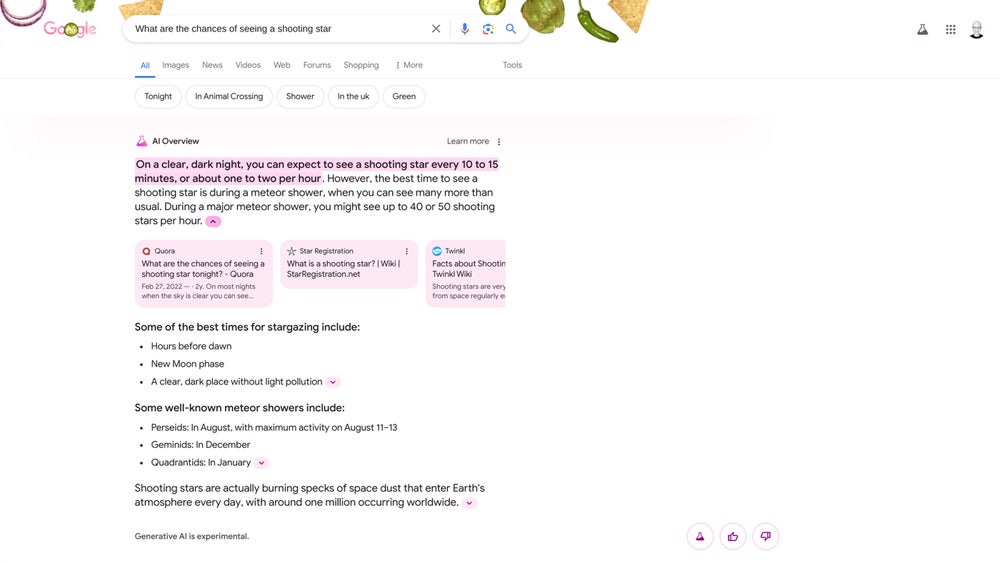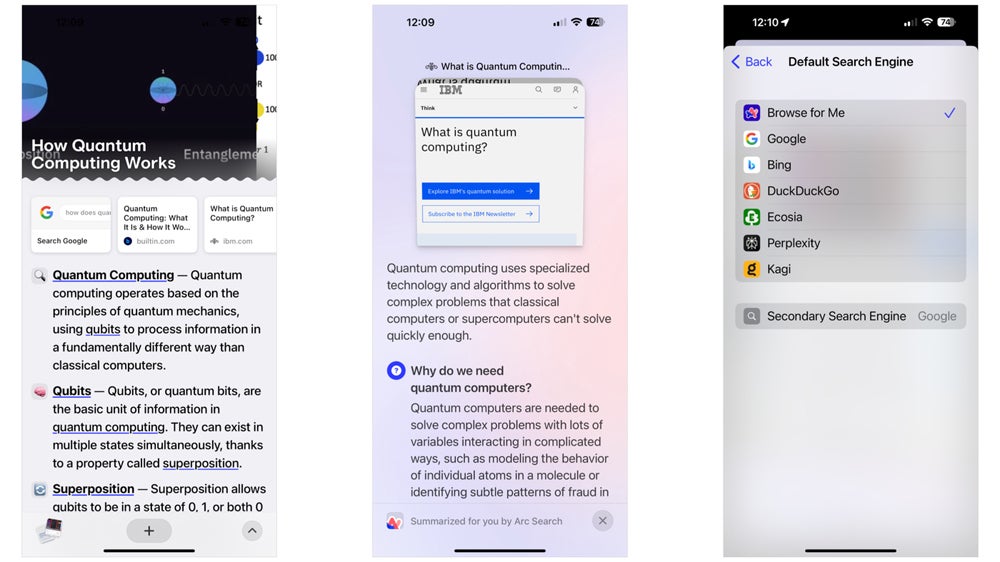
Emerging AI-based search systems often leverage large language models to generate explanations, consolidate content from multiple sources or cogently summarize a selected web page. The AI search systems covered below vary as to when they deliver LLM-aided results (ranging from only when you request it to every time) and how much control you have over whether AI is used at all (ranging from no control to quite customizable search settings).
Reader beware: The main issue with LLMs is the content may not always be 100% accurate. So go ahead and explore each of the five search systems listed, but make sure to verify any AI-generated response.
AI Overviews attempts to distill information from multiple sources into a single relevant answer, so you don’t need to sift through pages of links. Or, as Google employees have described it, AI Overviews lets “Google do the Googling for you.”
Like all the tools on this list, it’s new. Google announced AI Overviews, formerly known as Search Generative Experience, at Google I/O 2024.
Initially, an AI Overview is most likely to appear for searches that aid brainstorming, planning or understanding. For example, the screenshot shows the explanation generated in response to a sample query of “What are the chances of seeing a shooting star?” Note that this response features a few relevant links after the initial paragraph.
Google is rolling out AI Overviews as a feature of the company’s free, ad-supported search service available on the web and in mobile apps. It is available only on a subset of searches.
Perplexity leverages AI for every prompt, unlike Google’s AI Overviews. In some cases, especially when a query may be unclear, Perplexity pauses and prompts you for clarification; typically, this allows the system to tune the response to more accurately meet your question. Responses include easy-to-follow reference links to aid the verification of sources.

A free account includes a limited number of standard and pro searches; selecting the pro option routes to a better AI model, such as GPT-4o rather than GPT-3.5, for example. A paid upgrade to Perplexity Pro offers expanded access to AI systems, such as GPT-4 or Claude Opus. Perplexity is available on the web and in mobile apps.
Kagi Search promises tracking-free results with no advertising. The system relies on a variety of sources, including its own web and news indexes and Wolfram Alpha. Kagi significantly filters and sorts the data to deliver relevant results.

Kagi offers three distinct AI-driven services:
Kagi Search is free to try for up to 100 searches, with paid plans available for additional usage.
Made by The Browser Company, Arc Search is a search-centric AI-enabled app for iPhone. Arc Search includes these three AI features:

Additionally, you may set either Kagi or Perplexity (among other options) as the system’s secondary search engine, which otherwise defaults to Google.
Exa primarily seeks to serve the search needs of AI large language models, yet it also provides a browser interface for people to use. Exa works best when you structure your search as a statement. For example, “Here is how start-up founders approach time management” instead of using either a string of keywords or a question. (A setting can allow the system to automatically restructure your prompt if you enter a question.)

Exa serves up information you might otherwise need to repeatedly review many web pages to obtain. For example, rather than showing users links to listicles, Exa aims to consolidate the content from those lists and link to that instead.
The field of search remains intensely competitive. In addition to the options covered above, contenders include:
What search services and apps do you use? Which of the above apps and services do you use often? Are there other AI-driven search systems that you recommend? Mention or message me on X (@awolber) to let me know how AI and LLMs are changing how you search.